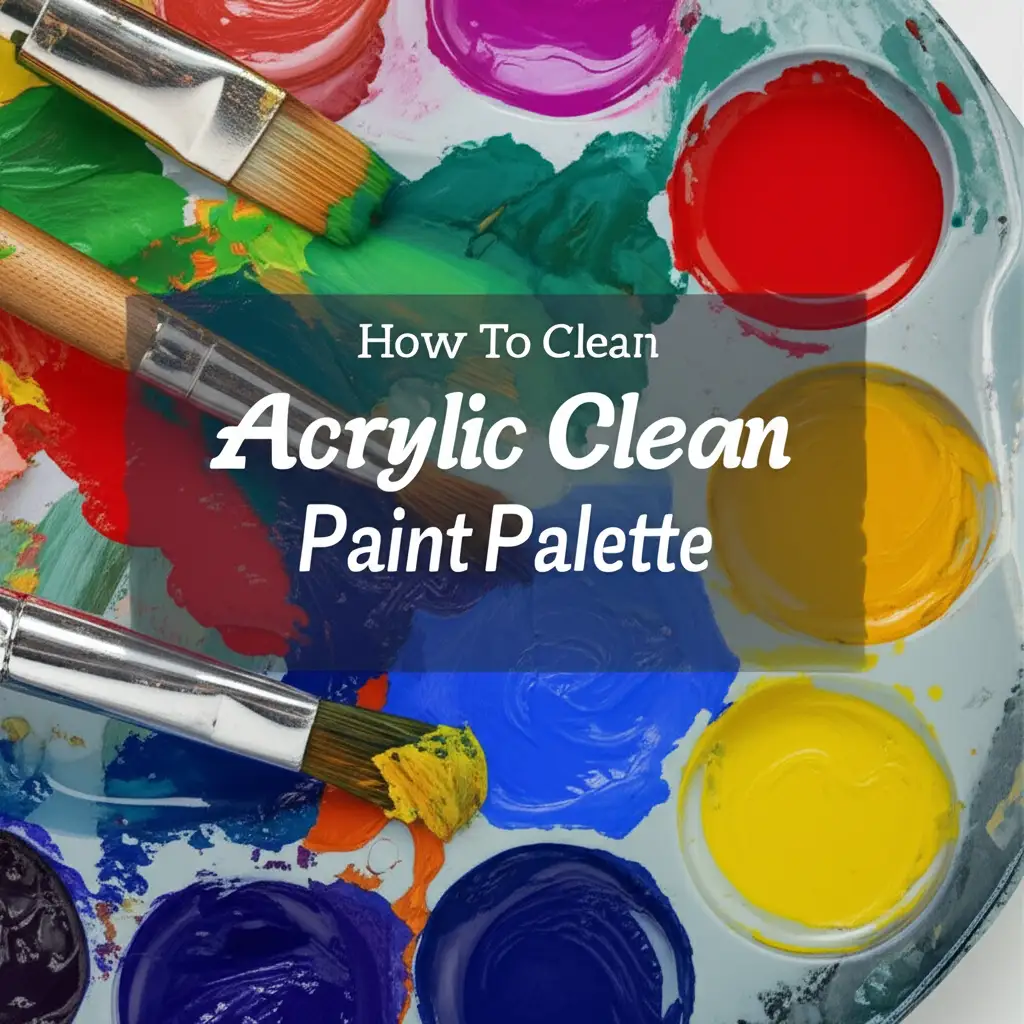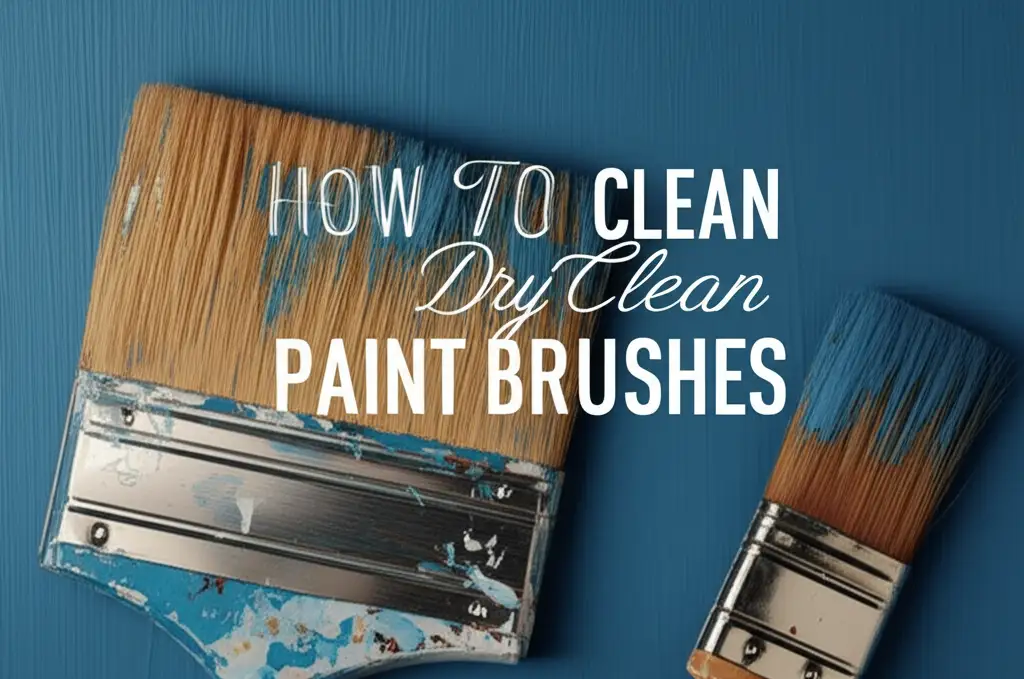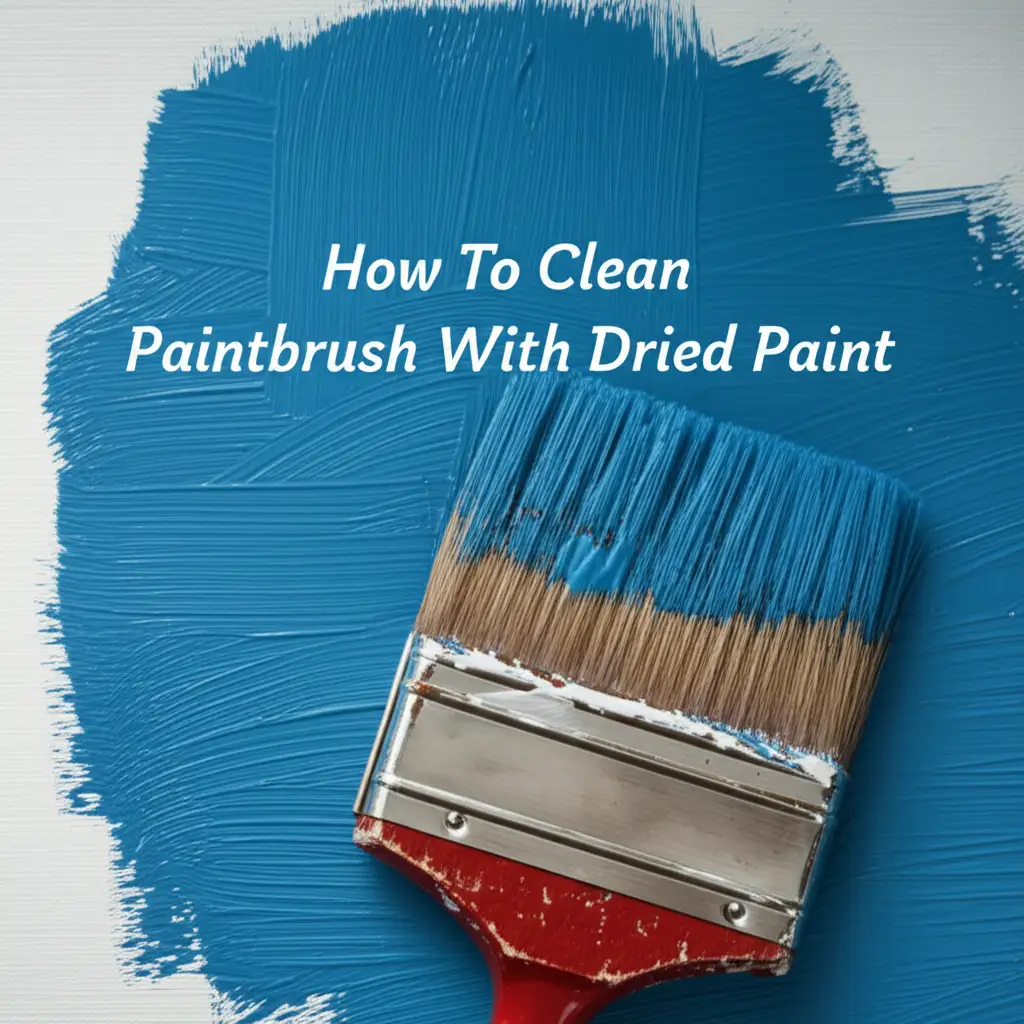· Art Supply Maintenance · 15 min read
How To Clean Acrylic Paint Palette

How to Clean Your Acrylic Paint Palette Effectively
A clean paint palette is a happy palette. It is also essential for any artist who works with acrylics. I know the frustration of seeing beautiful colors muddied by dried paint from a previous session. Acrylic paint dries quickly. This makes cleaning your palette a race against time, especially after a long painting session.
You might wonder if keeping your palette pristine is worth the effort. A clean palette ensures true color mixing. It also prolongs the life of your valuable art tools. In this guide, I will share the best ways to clean your acrylic paint palette. We will cover methods for both wet and dried paint. We will also explore specific tips for different palette materials. Let us make your cleaning process simple and effective.
Takeaway:
- Clean wet acrylic paint immediately for easy removal.
- Dried acrylic requires scraping or soaking to soften it.
- Your palette material determines the best cleaning approach.
- Regular cleaning prevents buildup and extends tool life.
To clean an acrylic paint palette, scrape wet paint immediately. For dried acrylic, soak the palette in warm soapy water to soften the paint. Then scrape gently with a palette knife or an old credit card. Denatured alcohol or mineral spirits can dissolve stubborn dried paint on non-porous surfaces. Always test solvents in an inconspicuous area first.
Understanding Acrylic Paint and Your Palette
Acrylic paint is amazing stuff. It offers vibrant colors and dries quickly. This fast drying time is both a blessing and a curse. It allows you to layer colors quickly. However, it also means paint hardens fast on your palette. This hardened paint becomes a challenge to remove later. Dried acrylic paint forms a plastic-like film. This film sticks stubbornly to surfaces.
The material of your palette also plays a big role in cleaning. Common palette materials include plastic, glass, wood, and even disposable paper. Each material responds differently to cleaning methods. A plastic palette might stain over time. A glass palette cleans up easily. A wooden palette absorbs paint if not sealed. Knowing your palette material helps you choose the right cleaning approach. My goal is always to keep my tools ready for the next creative burst. Understanding these basics sets you up for successful palette care.
When acrylic paint dries, it polymerizes. This means the water evaporates, and the acrylic resin forms a solid plastic layer. This layer adheres strongly to many surfaces. If you leave wet paint on your palette, it will quickly become dried paint. Dried paint is much harder to remove. This is why immediate action after painting is so important. A little effort right away saves a lot of scraping later. I find that the sooner I clean, the less time I spend struggling with stubborn residues. It keeps my workflow smooth and enjoyable.
Think of your palette as the canvas for your colors before they hit the actual canvas. If your mixing surface is dirty, your final colors will suffer. Dried bits of old paint can mix into fresh colors. This leads to muddy hues. This also wastes your new paint. By understanding how acrylic paint behaves, you can predict its drying time. You can then develop good cleaning habits. This knowledge helps me maintain my palette’s pristine condition. It ensures I always have a clean surface ready for my next artistic creation.
Essential Tools and Supplies for Palette Cleaning
Having the right tools makes palette cleaning much easier. You do not need a lot of specialized equipment. Many items are likely already in your home or art studio. I always keep a dedicated set of cleaning supplies near my workspace. This ensures I can tackle messes right away. Immediate cleaning prevents paint from drying and hardening.
First, you need a scraper. A metal palette knife works well for this. You can also use an old credit card or a plastic spatula. These tools help lift off wet or softened dried paint. Next, gather plenty of paper towels or old rags. These absorb excess paint and cleaning solutions. Running water is also key for rinsing your palette. For cleaning wet paint, simply using water is often enough. I prefer to use paper towels first to wipe off the bulk. Then I rinse under the faucet.
For dried acrylic paint, you might need stronger cleaning agents. Warm, soapy water is your first line of defense. Dish soap works great for this. For very stubborn, dried paint, denatured alcohol is effective. Isopropyl alcohol (rubbing alcohol) can also work. Mineral spirits can also dissolve dried acrylic. However, mineral spirits are generally stronger and require good ventilation. I typically use mineral spirits for stubborn residues. Always use these solvents in a well-ventilated area. Protect your hands with gloves. You can learn more about general paint brush cleaning here: how to clean paint brushes and rollers.
Safety is important when using solvents. Denatured alcohol is flammable. Mineral spirits also have fumes. Always read the product labels for safety instructions. Wear protective gloves to protect your skin. Safety goggles are also a good idea. Store these chemicals in a safe place, away from children and pets. When I finish cleaning, I dispose of any paint-soaked rags properly. Some solvents may require specific disposal methods. Following these simple steps keeps both you and your workspace safe.
Cleaning Wet Acrylic Paint from Your Palette
Cleaning wet acrylic paint from your palette is the simplest task. It takes minimal effort. The key is to act quickly. Once acrylic paint starts to dry, it becomes more difficult to remove. I always try to clean my palette immediately after my painting session. This prevents headaches later. A few simple steps make this process fast and effective.
First, scrape off the excess wet paint. Use your palette knife or a designated scraper. Gently push the wet paint into a pile. Then transfer this paint into a waste container. This prevents large amounts of paint from going down your drain. Pouring paint down the drain can cause plumbing issues. It also harms the environment. I often scrape my wet paint onto a piece of newspaper or an old plastic bag. This makes disposal easy.
After scraping, wipe down the palette surface. Use a damp paper towel or a clean, wet rag. Wipe away any remaining streaks of wet paint. You might need to use a few paper towels. Keep wiping until the surface looks mostly clean. For a final rinse, hold your palette under running warm water. Use your fingers or a soft sponge to scrub away any last traces of color. Warm water helps to loosen wet acrylic paint quickly.
Make sure all color residue is gone. Any lingering wet paint will dry on your palette. This creates a hard, plastic-like film. This film can then contaminate your fresh colors in the next painting session. I rinse my palette thoroughly until the water runs clear. Then I dry it completely with a clean towel. A dry palette is ready for your next painting adventure. This simple, quick clean-up routine saves you time and effort in the long run. It also keeps your palette in top condition.
How to Tackle Dried Acrylic Paint on Palettes
Dried acrylic paint on a palette is a common challenge for artists. It is much harder to remove than wet paint. But don’t despair! Several methods can effectively tackle stubborn, dried acrylic. You just need a bit more patience and the right approach. My strategy usually involves a combination of techniques.
Scraping Dried Paint
When paint has dried into thick layers, scraping is your first line of attack. Use a sturdy metal palette knife or a dedicated scraper. Hold the scraper at a low angle to the palette surface. Apply firm, steady pressure. Push the blade under the dried paint film. The goal is to lift the paint off in sheets or flakes. Be careful not to scratch your palette surface. This is especially true for softer plastic palettes. I often find that working slowly and methodically yields the best results. For very hard paint, try soaking it first.
Soaking for Easier Removal
Soaking is an excellent way to soften dried acrylic paint. Fill a basin or sink with warm, soapy water. Use regular dish soap. Submerge your palette completely in the water. Let it soak for at least 30 minutes. For very thick or old dried paint, you might need to soak it for several hours, or even overnight. The warm water helps to rehydrate the dried paint. This makes it more flexible and easier to scrape off. After soaking, try scraping again. You will notice the paint comes off much more easily. Soaking significantly reduces the effort needed for removal.
Using Solvents for Stubborn Stains
For the most stubborn, dried acrylic paint, chemical solvents are necessary. Denatured alcohol is a powerful option. Isopropyl alcohol (rubbing alcohol) also works, but denatured alcohol is often more effective. Apply a small amount of the solvent to a clean rag or paper towel. Then rub it directly onto the dried paint. The solvent will begin to dissolve or soften the plastic-like film. You may need to let it sit for a minute or two. Then gently scrape or wipe away the paint. Mineral spirits can also dissolve acrylic paint. However, they are stronger and have more fumes. Always use solvents in a well-ventilated area. Wear gloves to protect your skin. You can get more details on how to clean a paintbrush with dried paint by visiting how to clean paintbrush with dried paint. For specific guidance on using mineral spirits, check out this guide: how to clean paint brushes with mineral spirits. Always test solvents in an inconspicuous area of your palette first. This ensures they do not damage the palette material.
Specific Cleaning Tips for Different Palette Materials
Different palette materials require different cleaning considerations. What works perfectly on glass might not be ideal for wood. Knowing your palette’s material helps you choose the gentlest yet most effective cleaning method. This prevents damage and prolongs your palette’s life. I always consider the material before choosing my cleaning tools and solutions.
Plastic Palettes
Plastic palettes are very common. They are lightweight and inexpensive. However, they can stain over time, especially with darker colors. For wet paint, a quick wipe with a damp cloth works well. For dried paint, soaking in warm, soapy water is usually effective. You can then scrape off the softened paint. Be gentle with scraping. Hard scraping can leave scratches on the plastic surface. These scratches can trap paint, making future cleaning harder. Denatured alcohol can remove stubborn stains. Test it on a small area first to ensure it does not cloud or damage the plastic. I usually opt for soaking plastic palettes first. This is gentler than immediate scraping.
Glass Palettes
Glass palettes are a favorite for many artists, including me. They are smooth, non-porous, and incredibly easy to clean. Paint does not stick as stubbornly to glass as it does to plastic or wood. For wet paint, a simple wipe with a paper towel and rinse with water is enough. Dried acrylic paint comes off easily from glass. Use a metal palette knife or a razor blade scraper. Hold the blade at a very low angle to the glass surface. Carefully push the blade under the dried paint film. The paint should lift off in satisfying sheets. Glass palettes withstand strong solvents like denatured alcohol without damage. Always handle glass palettes carefully to avoid breaking them. After scraping, wipe with a damp cloth to remove any residue.
Wooden Palettes
Wooden palettes have a classic feel. They are absorbent if not properly sealed. This makes them challenging to clean. For wet paint, wipe it off immediately with a damp cloth. Do not let paint dry on bare wood. If you have an unsealed wooden palette, consider sealing it. You can use linseed oil or a clear varnish. This makes cleaning much easier. For dried paint on a sealed wooden palette, scrape gently with a plastic scraper. Avoid metal tools that might gouge the wood. You can try soaking a small area with a damp cloth soaked in warm, soapy water. This helps soften dried paint. For unsealed wood, solvents like denatured alcohol might be absorbed into the wood. This can cause staining or damage. Always test on an inconspicuous area first. Regular oiling of your wooden palette helps to prevent paint from soaking in.
Disposable Palettes
Disposable palettes are great for quick sessions or when you want to avoid cleanup entirely. They are typically made of paper or waxed paper. Once you finish painting, you simply fold up the palette and dispose of it. This is the ultimate easy cleanup. While convenient, consider the environmental impact of using disposable items regularly. I use them sparingly, often for small projects or when traveling. For most studio work, I prefer reusable palettes. They reduce waste and give me a consistent mixing surface.
Maintaining Your Palette for Longevity
A well-maintained palette does more than just look nice. It actually improves your painting experience. A clean palette ensures true color mixing. It also extends the lifespan of your art supplies. You invest in your tools. Therefore, it makes sense to take good care of them. My goal is always to keep my palette in prime condition. This makes my artistic process smoother.
The most important step in palette maintenance is consistent, regular cleaning. Do not let paint dry on your palette if you can help it. Clean your palette after every painting session. Even if you just used a few colors, take a moment to wipe them off. This prevents stubborn buildup over time. A quick clean-up takes minutes. Removing old, dried layers of paint can take much longer. I have found that building this habit saves me a lot of frustration. It also keeps my palette ready for the next creative impulse.
Consider preventative measures. For wooden palettes, regular oiling is key. Use a non-toxic art oil, like linseed oil. This oil helps seal the wood. It makes the surface less absorbent. This prevents paint from soaking deep into the grain. For plastic or glass palettes, you can try covering unused sections with plastic wrap. This keeps paint wet for longer. It also protects your palette from drying paint. Some artists even use a spray bottle to mist their palette with water. This keeps their paints workable during a session.
Proper storage also impacts your palette’s longevity. Store your palette flat or upright in a way that prevents it from bending or warping. If you have a wooden palette, store it in a stable environment. Avoid extreme temperature changes or humidity. These can cause the wood to crack or warp. Keep your palette in a designated spot. This protects it from accidental damage or spills. A well-cared-for palette is a joy to use. It becomes a reliable part of your artistic toolkit. If you take care of your palette, it will serve you well for many years of painting.
FAQ Section
Q1: Can I use nail polish remover to clean my acrylic palette?
Yes, nail polish remover, which contains acetone, can dissolve dried acrylic paint. It is a powerful solvent. However, use it with caution. Acetone can damage some plastic palettes, making them cloudy or sticky. Always test it on a small, hidden area of your palette first. Wear gloves and ensure good ventilation when using it.
Q2: How do I prevent paint from drying on my palette?
You can prevent paint from drying by working quickly. Use a spray bottle to mist your paint with water during your session. You can also cover unused paint with plastic wrap between uses. Some artists use a “stay-wet” palette. These palettes have a sponge layer under special paper, keeping paint hydrated for longer periods.
Q3: Is it okay to leave acrylic paint on my palette overnight?
No, it is generally not okay to leave acrylic paint on your palette overnight. Acrylic paint will dry and harden, becoming much harder to remove. It forms a plastic-like film. This requires scraping or solvents to clean. It is best to clean your palette immediately after each painting session.
Q4: Will cleaning agents damage my palette?
Strong cleaning agents like denatured alcohol or mineral spirits can damage some palette materials. Acetone (in nail polish remover) can soften or cloud certain plastics. Always test any strong solvent on an inconspicuous area of your palette first. Warm soapy water is usually safe for all materials. Choose the gentlest effective method.
Q5: How often should I clean my acrylic paint palette?
You should clean your acrylic paint palette after every single painting session. This prevents paint from drying and building up. Cleaning wet paint is much easier and faster than removing dried layers. Regular cleaning extends your palette’s life and ensures fresh, clean colors for your next artistic endeavor.
Conclusion
Cleaning your acrylic paint palette does not have to be a chore. It is an essential part of maintaining your art supplies. A clean palette leads to better color mixing. It also prolongs the life of your valuable tools. We covered various methods, from quick wipes for wet paint to soaking and scraping for dried residues. We also explored how different palette materials affect your cleaning approach.
Remember, acting quickly after a painting session is always best. Wet acrylic paint is easy to remove with just water and a scraper. For stubborn, dried paint, methods like soaking in warm soapy water or using solvents like denatured alcohol can make a big difference. Always consider your palette’s material. Plastic, glass, and wood each respond differently to cleaning agents.
By following these simple, effective cleaning tips, you keep your acrylic paint palette in top condition. This ensures it is always ready for your next creative burst. A well-maintained palette allows you to focus on your art, not on stubborn paint messes. Go ahead, give your palette the care it deserves. Enjoy your painting!
- acrylic paint
- palette cleaning
- dried paint removal




